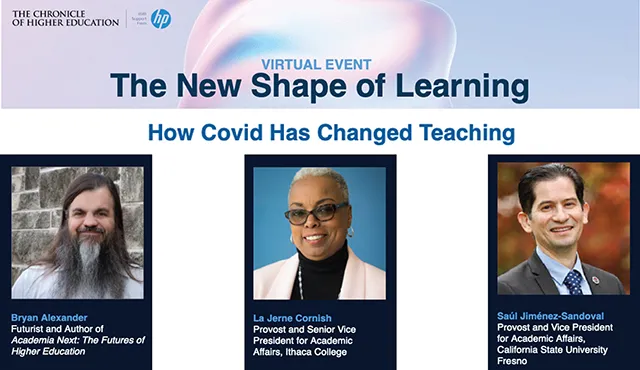Cornish also talked about Ithaca College’s Honors Program Rapid Response Salon, and how this led to increased interdisciplinary collaboration.
“We reached out to the community, and to each other, and that, hopefully, will lead to more interdisciplinary majors as well,” said Cornish.
Cornish addressed the racial reckoning that is going on in our country right now.
“This is an opportunity for us to think of the ways we can make the curriculum more reflective of the students who are in our classrooms,” said Cornish. “How we can use this technology to invite guest lecturers so students can see someone like them in the classroom, and that is what students are demanding now.”
On other ways that COVID-19 has impacted teaching in higher education, Cornish talked about the heightened inequities and how some students don’t have access to resources, or quiet space, like they would on campus.
“We conducted a survey of students at the end of the spring because we wanted to learn what this experience meant for them,” said Cornish. “The number one challenge was finding a work or study space. It speaks to the desire that students have to return to campus, to have a space on campus to learn means the world to them. We’re still figuring out how we give students the chance to study somewhere comfortably, remotely.”
Additionally, Cornish talked about how now that we are offering classes remotely, they are seeing more students coming to office hours than they ever would in person.
“One thing students want more of is opportunities to interact with their peers and faculty,” said Cornish. “Professors are providing more office hours because students are desiring more connection.”
On how COVID-19 will change higher education for the future Cornish expects a lasting impact.
“I think we will have a new normal and I think students demand that we keep going down this path,” said Cornish. “Here is to continued engagement and partnership.”
